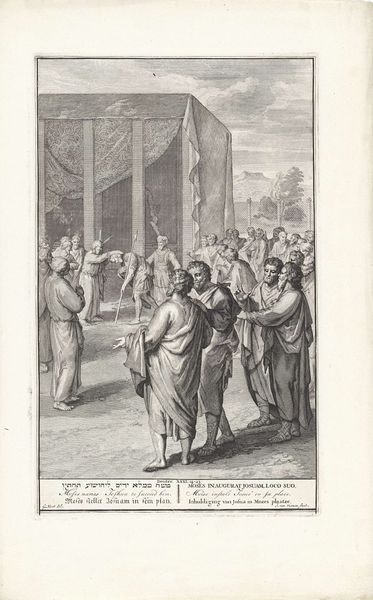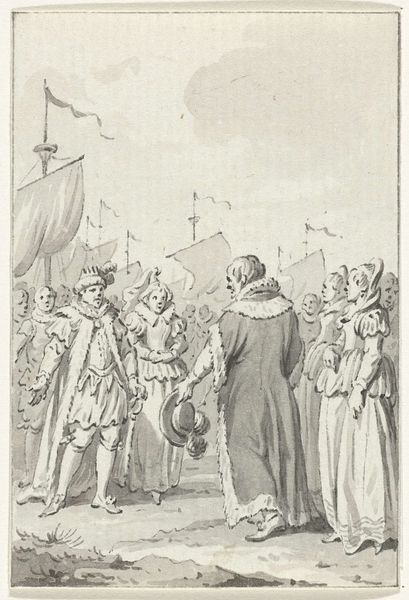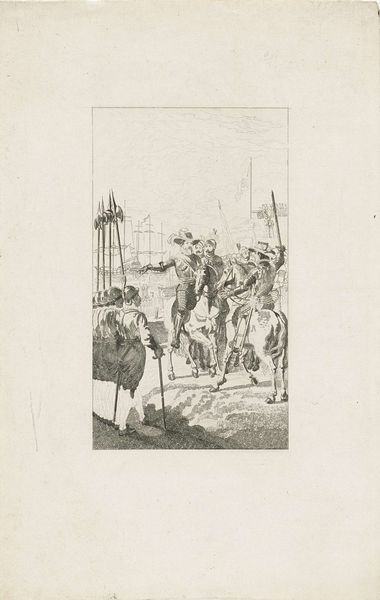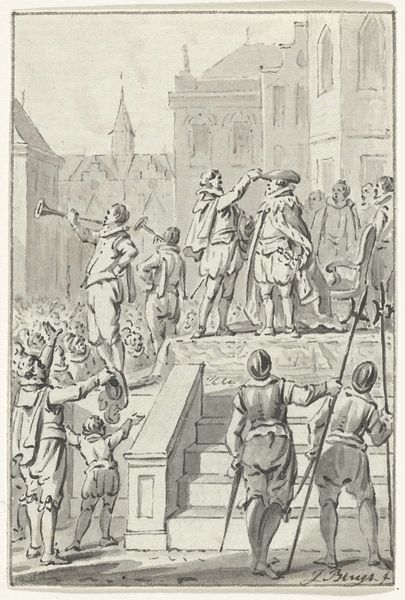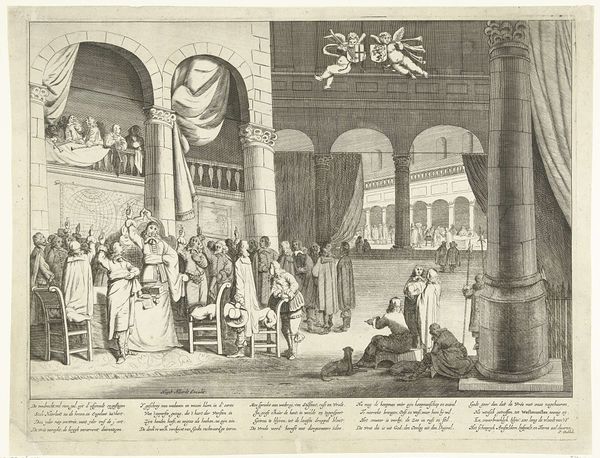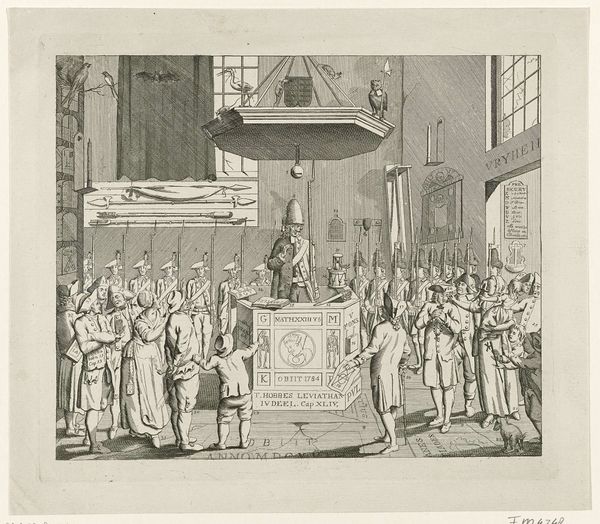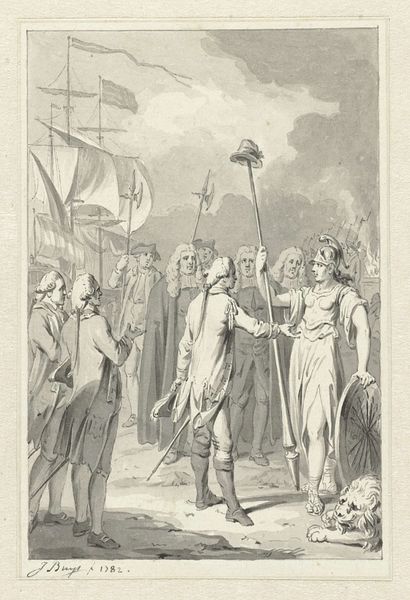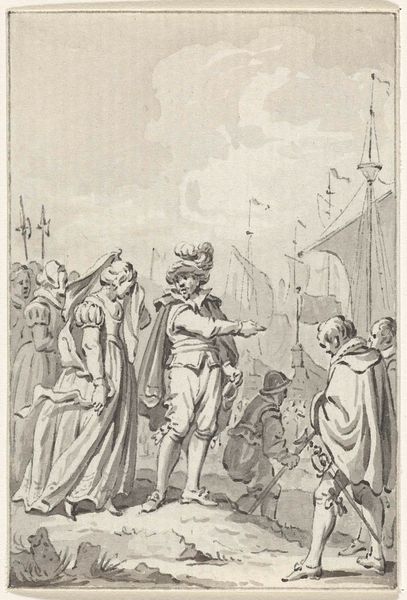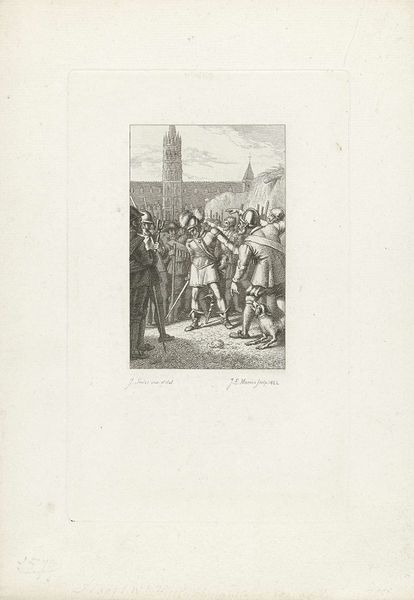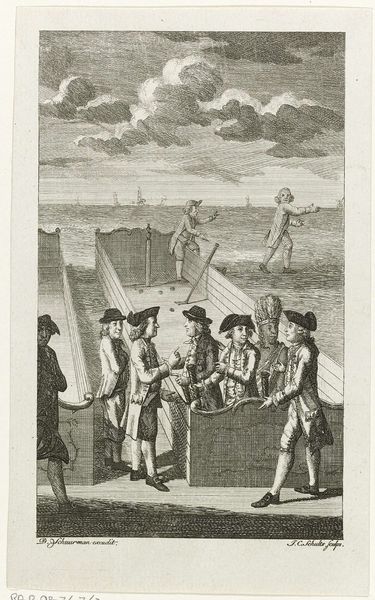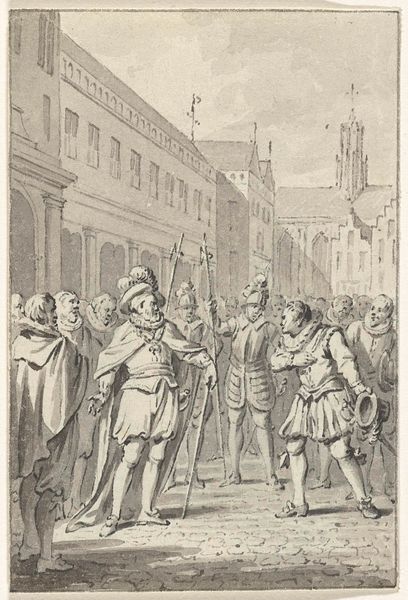
Johan van Oldenbarnevelt spreekt vanaf het schavot voor zijn onthoofding de omstanders toe, 13 mei 1619 1780 - 1795
0:00
0:00
print, etching
#
portrait
#
narrative-art
#
dutch-golden-age
# print
#
etching
#
pencil sketch
#
figuration
#
history-painting
Dimensions: height 82 mm, width 56 mm
Copyright: Rijks Museum: Open Domain
Curator: This etching, likely dating from the late 18th century, depicts a pivotal moment in Dutch history. It is titled, "Johan van Oldenbarnevelt spreekt vanaf het schavot voor zijn onthoofding de omstanders toe, 13 mei 1619," and is attributed to Jacobus Buys. Editor: My initial impression is the sheer somber mood created by the monochromatic palette. The composition, divided into the stage above and the crowd below, creates a sense of detachment and cold finality. Curator: Precisely. Oldenbarnevelt’s execution was a significant political event, marking a turning point in the Dutch Republic's power dynamics. The print, through its sharp contrasts, really highlights the public nature of justice and the price of political dissidence. Editor: And I think that choice of etching underscores that. An etching, with its relatively accessible reproduction capabilities, allowed for a broader dissemination of this very loaded imagery and probably served as an artifact and echo for conversations for decades to come. The materiality directly impacts its role. Curator: Yes, this type of print played a crucial role in shaping public memory and the historical narrative surrounding Oldenbarnevelt. Prints like this one became crucial tools for disseminating political ideology and social commentary. The museum has similar pieces that track collective understanding of critical turning points. Editor: It also emphasizes the hand involved. See how each face in the crowd, each crease in Oldenbarnevelt’s robes is brought to life through meticulous line work? It underscores how meaning is built through such intentional processes of production and reception. Even a seemingly mass-produced item still shows unique labour and skill. Curator: Absolutely. This image of authority and resistance continues to invite dialogues. The careful rendering highlights that the story is more about Oldenbarnevelt than the means of this violent state display. Editor: Agreed. Examining pieces such as this reminds me of the vital intersections between historical occurrences and art as material culture, influencing and informed by their context.
Comments
No comments
Be the first to comment and join the conversation on the ultimate creative platform.


